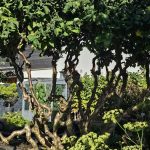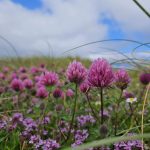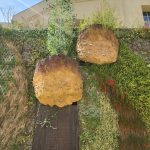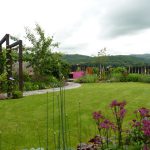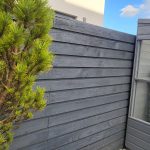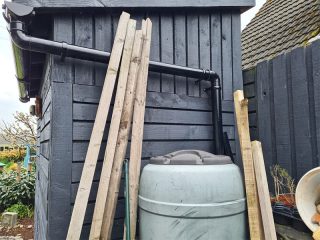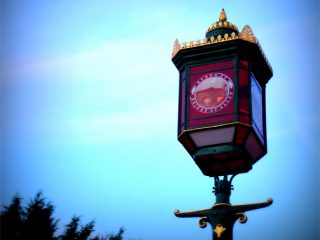Deadly v Woody Nightshade
Monday, 04 September 2017
We have heard a lot of chat recently about deadly nightshade and fears that it is appearing in domestic gardens. However, in many instances it is actually a completely different plant called Woody Nightshade which is growing. It evens grows out of my school hedge! Whilst it’s not as toxic as it’s deadly namesake, its berries should still never be eaten. In fact NO berries should ever be eaten unless a responsible adult says it’s OK (or it comes in a punnet from Waitrose!) If you are worried about what is in your garden or just want to learn more, here are some images of the two plants and some interesting facts to correctly identify whether they are deadly or woody nightshade…
The name
They are both members of different genera – Atropa and Solanum – but of the same family, the Solanacea.
Deadly Nightshade is Atropa belladonna. Despite its deadly potential, belladonna literally means ‘beautiful lady’ coming from its use to promote pupilar dilation, a proven way to increase attractiveness apparently!
Woody Nightshade’s latin name is Solanum dulcamara. It actually belongs to the same family as the humble potato and tomato. Don’t let that fool you into eating it though!
The flowers
The flowers of Deadly Nightshade appear as a single flower while the Woody plant’s flowers grow in clusters:
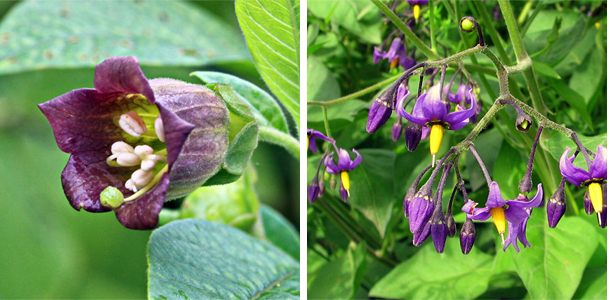
Deadly v woody nightshade
The berries
The unripe berries show a clear difference: the Atropa belladonna has a single berry while the berries of the Solanum dulcamara hang in clusters. The ripe berries are even more distinctly different, in colour, shape and structure:
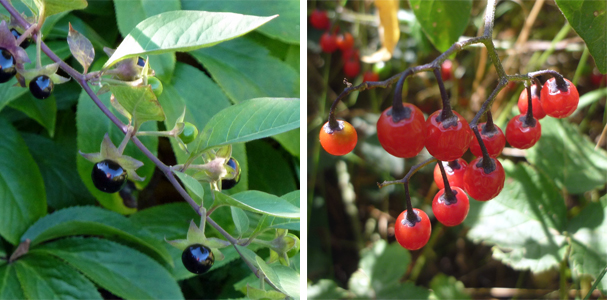
Deadly v woody nightshade
The effect
Deadly Nightshade: Symptoms may be slow to appear but last for several days. They include dryness in the mouth, thirst, difficulty in swallowing and speaking, blurred vision from the dilated pupils, vomiting, excessive stimulation of the heart, drowsiness, slurred speech, hallucinations, confusion, disorientation, delirium, and agitation. Coma and convulsions often precede death! Yikes! There have been differing opinions on what is required to be digested in order to cause poisoning, some saying half a berry, others saying 20+. To make it simple just never eat any! Or the root which is even more toxic!
Woody Nightshade: It contains solanine, an alkaloid glycoside. It increases bodily secretions and leads to vomiting and convulsions. The strength of its actions is said to be very dependent on the soil in which it grows with light, dry soils increasing its effects. Though the berries are very attractive the bitter taste is a disincentive for the majority of people, especially children. There have been no recorded deaths from eating the berries from this plant in recent years but it will likely give you a very sore tummy and need medical attention if consumed.
If you want to learn more about poisonous plants we hugely recommend a visit to the Poison Garden at Alnwick Gardens. Their Fairy Garden is awesome too! If you are still unsure which plant you have in your garden and want some advice then please get in touch.
And remember, no eating dubious berries you find!
Lulu & Tilda
